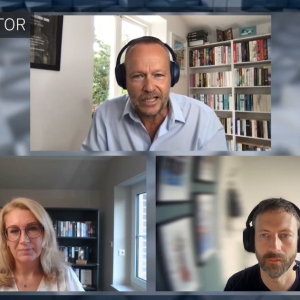IBM is holding briefings around the world this week in a last-gasp push to jump start its stalled OS/2 operating system and to demonstrate that it needs Microsoft Corp and all its works no longer. IBM president Jack Kuehler, addressing of IBM dealers in San Diego on Monday claimed that the need for OS/2 in the marketplace remains stronger than ever. Quite simply, our customers need an operating system that will enable them to invest confidently in their future applications. OS/2 continues to be IBM’s long-term strategy. Key to the push is the forthcoming 32-bit OS/2 2.0, which it claims will provide a better MS-DOS than MS-DOS and a better Windows than Windows. And while IBM may not need Microsoft, it does need a partner, because it can’t justify pulling its best system software developers off the much more profitable MVS and OS/400 to work on OS/2. It has chosen as its new partner Micrografx Inc of Richardson, Texas which develops OS/2 and Windows-based graphics applications. IBM promises that OS/2 2.0 will run MS-DOS, Windows and 16-bit and 32-bit OS/2 applications concurrently from a single operating system. It says that by exploiting current and future technologies such as networking, multimedia and object-oriented programming as well as exploiting the 80386SX chip and up, OS/2 2.0 protects customer investments while moving them into the future. IBM is also promising that OS/2 2.0 will be more extensively tested than any other IBM Personal Systems software product and, before its general availability, will have been tested by more than 1,000 beta test and Early Experience Programme participants. As for Micrografx, it will develop migration tools and performance enhancements for OS/2, which will include faster application execution in OS/2 2.0; the ability to run Windows applications as high-performance OS/2 2.0 Presentation Manager applications; toolkits to convert Windows device drivers to OS/2 Presentation Manager; additional device drivers in OS/2 for use by Presentation Manager applications; and a data-driven business graphics application as a desktop accessory. And, as reported briefly, from today, OS/2 1.3 Standard Edition is cut by 56% to $150; OS/2 1.3 Extended Edition will be $690, a cut of 17% – but why doesn’t IBM make the thing available for the cost of the disk for a limited period? PC-DOS users can have OS/2 1.3 Standard for $100 and OS/2 1.3 Extended for $635; and promotional offerings are available for customers to move to OS/2 1.3 and 2.0. IBM, as expected, is also unbundling OS/2 Extended Edition, which currently consists of Communications Manager, Database Manager and LAN Requester components: it will be repac kaged as two separate products. LAN Requester will become part of OS/2 LAN Server, and an extended services package will be offered comb ining Communications Manager and Database Man ager – and IBM will offer them to run on third party micros outside its customer base, and is working with many manufacturers for testing of initial versions of the repackaged products. In an effort to convince users that IBM really means business this time, it has broken with the habits of a lifetime in software develop ment and instead of using large horizontal groups, OS/2 is now being developed by small, focused vertical teams, which IBM hopes will lead to more flexibility and efficiency. In the never-ending quest for applications, IBM says that more than 2,500 shrink-wrapped appli cations are announced or available for 16-bit OS/2 and more than 300 applications are announ ced or available for 16-bit Presentation Mana ger, while 1,200 US software firms are develop ing applications for OS/2. IBM also claims there are about 600,000 OS/2 copies installed worldwide and the company is pitching for 1m by the end of the year still a far cry from the 3m copies of Windows 3.0 sold in 1990 alone.






